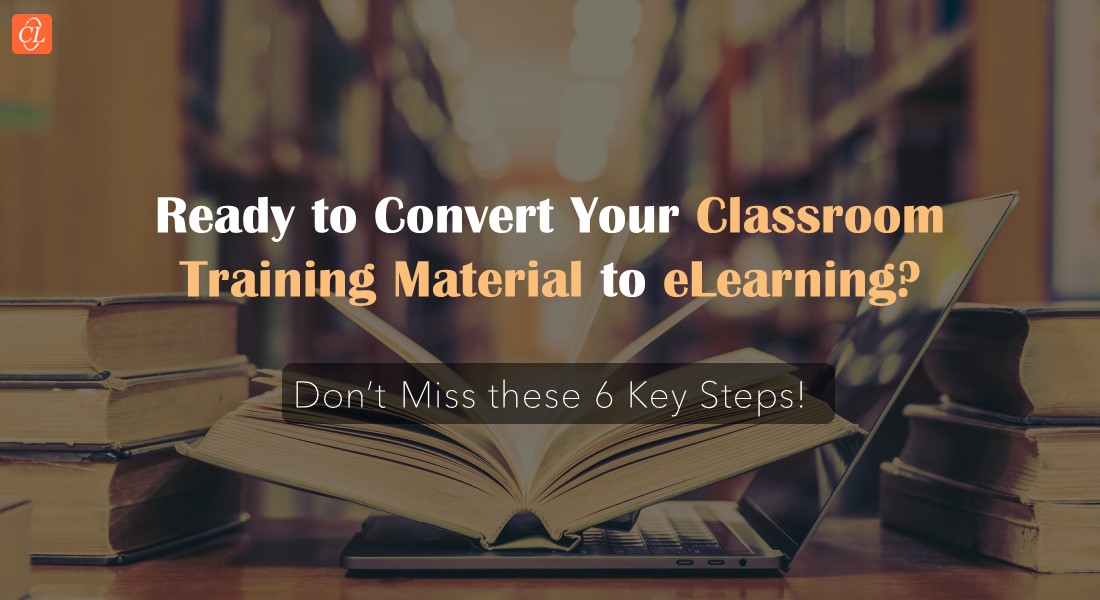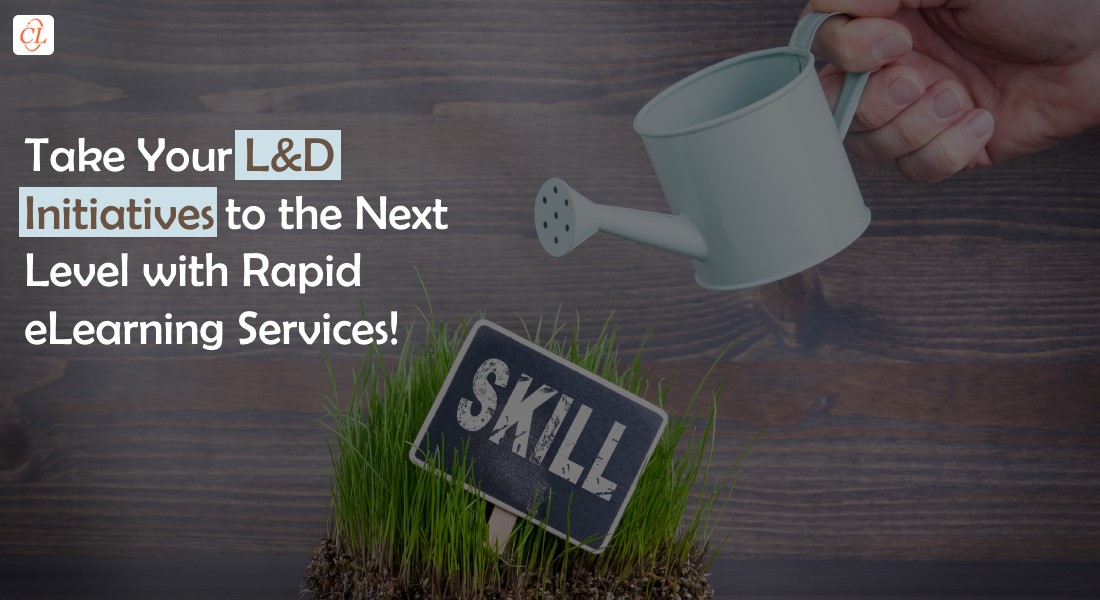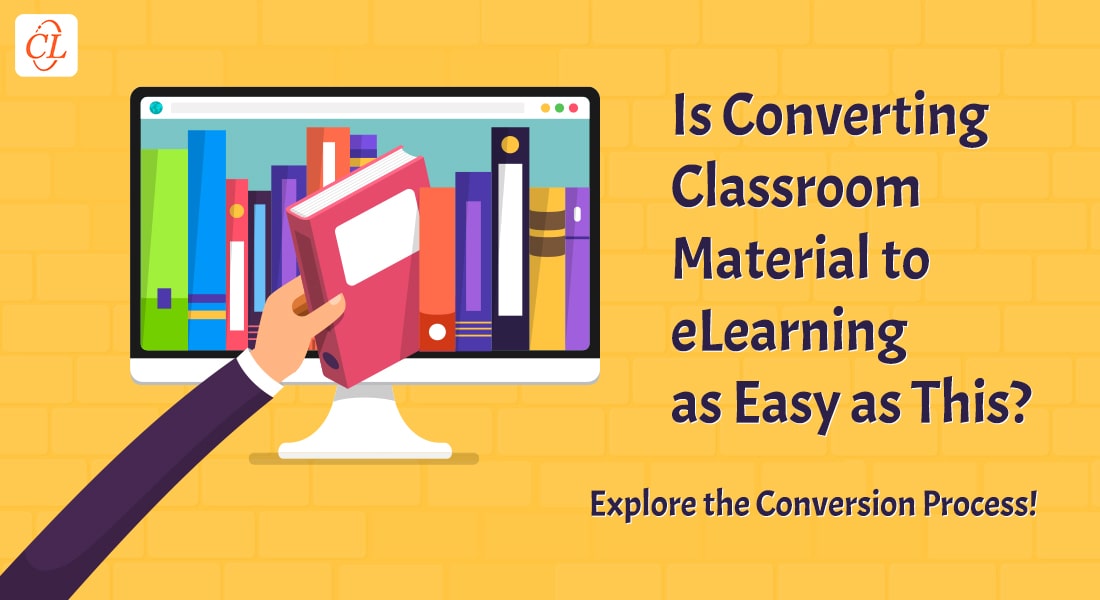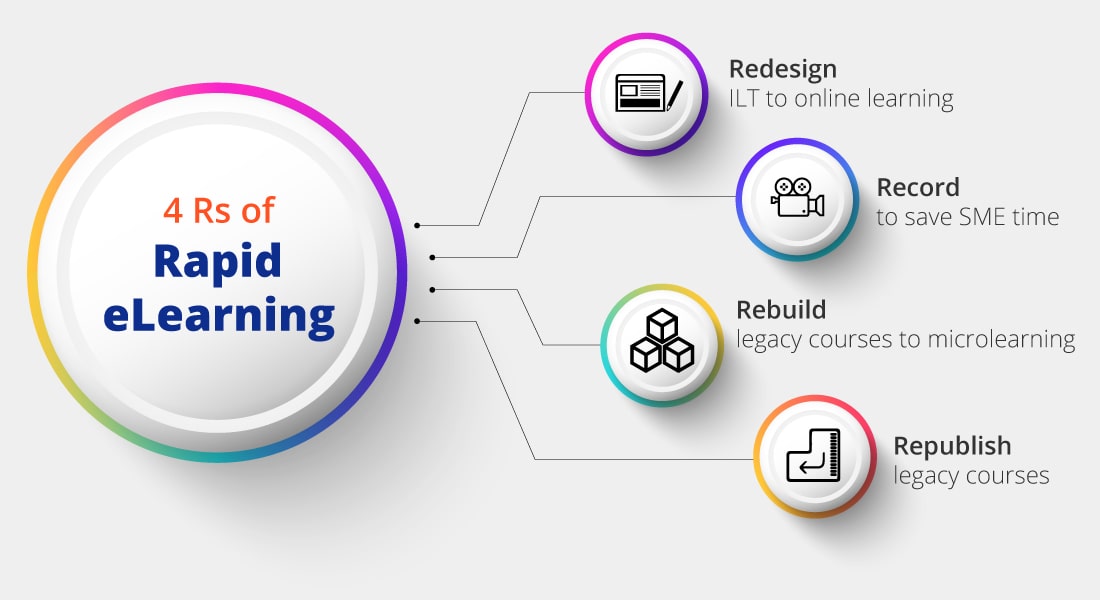Learn the Truth About Getting Started with Converting Classroom Material to eLearning

Whether you want to convert your classroom material into eLearning courses with the support of your in-house L&D team or instead outsource the work to eLearning experts, you must still understand the process behind it as well as what the factors are that contribute to its efficiency.
The pandemic has emphasized the importance of eLearning especially when onboarding new employees and retraining old ones even though they might be working remotely. However, the process of converting classroom content cannot simply be described as entering content onto an authoring tool and somehow magically leaving with an eLearning course.
Why should organizations convert their existing classroom material to eLearning courses?
Here are the reasons why organizations should convert their existing Classroom material to eLearning courses:
- Budget-friendly
- Adaptability
- Learning at One’s Own Pace
- Continuous Improvement
eLearning courses must provide engaging interactivities to entice its learners to start a course and effectively maintain their attention throughout its length. Classroom training may be difficult to attend for learners who are tied down to their schedules, globally dispersed or and constantly on the move. Given the current situation of the worldwide pandemic as well as the rising popularity and appeal of eLearning, making the change from Instructor-led Training (ILT) to eLearning is a necessary and trendy alternative for global businesses.
Explore how eLearning helps achieve business goals.
The conversion from ILT to eLearning courses offers the following benefits:
- Reducing training costs
- Improving employees’ productivity
- Raising revenues
- Increasing employee participation
- Ensuring scalability
Making the change from classroom training to eLearning courses is a significant shift that should be approached with caution.
Steps to Ensure Classroom Material is Ready to be Converted
1. Evaluate the Learners as well as the Learning Environment
The purpose of every employee training program is to improve on the job performance. You need to know what your learners are doing today and what they plan to achieve in the future in order to enhance their performance.
We must also consider the learning environment when converting classroom training into eLearning courses, such as the learners’ setting, their device, their available time, and other work obligations.
Millennials have very short attention spans, they are extremely tech-savvy, and they always want easy access to information. This complicates matters further when developing eLearning courses that can grab and hold the attention of today’s millennial workforce for sustained lengths of time.
When creating eLearning programs, it’s critical to keep the learners’ preferences and learning styles in mind. To provide creative training programs that are effectively tailored to the learners’ specific requirements, it helps to gain additional information about their learning environment. Consider the following strategies when designing eLearning courses:
Mobile Learning:
Learners can access bite-sized online sessions anywhere, and any time, using any mobile device such as smartphones, iPads, and Android devices.
Micro Learning:
It’s a type of training that consists of short, 3-5-minute modules that focus on a single learning objective.
Video-based Learning:
This happens when short videos are incorporated to create courses that are appealing to visual learners.
Gamification
is a term used to describe game-based eLearning courses that engage and motivate learners to complete the game and ultimately the course.
Blended Learning
is using different kinds of digital media to cater to various learning styles and make learning more exciting and engaging.
2. Re-examine Learning Objectives
Re-examining your ILT program’s learning objectives helps you aim for excellence, stay focused, and continue to be updated with your learners needs. Performance-based learning objectives define what learners are expected to do once they complete the training. To be effective, learning objectives should be Specific, Measurable, Attainable, Relevant, and Targeted or in other words SMART.
It’s not always possible for eLearning courses to be able to integrate everything that is covered in classrooms. This makes it all the more important to discuss the courses’ performance-based learning objectives with your eLearning experts.
After understanding your requirements, your eLearning developers will go through the classroom content and, if necessary, add to or change the learning objectives to incorporate critical aspects of eLearning design.
3. Prepare eLearning Content
Determine whether your learners’ needs can be addressed with ready-to-use courses before looking into classroom material. You must first assess whether classroom materials such as PowerPoint decks, facilitator guides, and participant handouts are available and accessible.
Any organization that offers on the job training will have an abundance of classroom material. You need to go through the content available and see if it corresponds to your learning objectives. You must use rapid authoring tools to convert classroom material to eLearning as they save a lot of time and money.
You also must examine your content to determine what is best suited for eLearning and what is not. Ensure that your eLearning vendors have access to suitable classroom materials that match your eLearning course’s objectives.
When designing your eLearning course, it is preferable that your Subject Matter Experts (SMEs) explain complicated technical topics to the Instructional Designers (IDs).
A lot of ILT material contains additional information that doesn’t need to be a part of your eLearning course. In such circumstances content must be processed to distinguish between the important need-to-know material and the extra nice-to-know information. The Instructional designers oversee this part of eLearning course design.
4. Choose the Appropriate Authoring Tool
Desktop or web-based rapid authoring tools facilitate eLearning course creators to construct engaging learning experiences swiftly and effectively with capabilities that include interactive module designs and multimedia assets as well as mobile compatibility. Therefore, it’s critical to pick the right authoring tool for your company.
You need to keep the following factors in mind when choosing an authoring tool:
- How well it fits within your budget
- How much time you have to develop the course
- What type of interactivities you require
- What kind of features it must help you implement your educational media
5. Invest in a Learning Management System
An LMS (Learning Management System) is a platform that enables organizations to successfully manage their eLearning courses as well as improve employee performance. It hosts numerous passwords protected courses that learners are given access to.
LMSs empower training managers to monitor, measure, and report on the overall training initiatives in an organization that include classroom, online, blended, and other performance related learning. They are also useful when it comes to the preservation of training materials. There are many types of LMSs to choose from such as company owned LMSs, commercial LMSs and open source LMSs such as Moodle.
Now that you know how to prepare your classroom material for eLearning course conversion, let’s look at the compelling reasons to convert your existing classroom content to eLearning courses.
Reasons Why Organizations Should Convert their Existing Classroom Material into eLearning Courses
1. Budget-friendly
If you are operating around the world, classroom training requires considerable expenditure on additional infrastructure and facilitator fees. However, when it comes to eLearning courses, costs are reduced significantly as it is possible to offer one course in many globally dispersed locations.
2. Adaptability
If you are participating in an eLearning course, learners can access it from anywhere and at any time. In contrast, gathering employees in one location for classroom training can be quite difficult especially if your learners are unable to attend a one-time session.
3. Learning at One’s Own Pace
According to adult learning principles, some learners may not feel comfortable sitting in a classroom for long time periods. With eLearning, however, learners can access the course from any location be it at home or on the road.
Some learners may not be able to grasp what is being taught in class and may not completely fulfill their performance-based learning objectives. In an eLearning course, learners are afforded the opportunity to rewind as many times as they like for a satisfactory learning experience.
4. Continuous Improvement
In case of changes made to eLearning course material midway, the courses can be quickly adjusted to remain up to date. In the event of a classroom session, the training would need to be rescheduled and this could be a logistical nightmare.
Parting Thoughts
In these times of pandemic related restructuring, face-to-face classroom training may not be the ideal solution. It’s time to future-proof your organization’s training now. This article was aimed at giving you more insights into how to get started with designing eLearning courses
If you want to learn more about how outsourcing eLearning course design might benefit you, here’s a free eBook on “A Practical Guide to Outsourcing eLearning Design & Development.”





